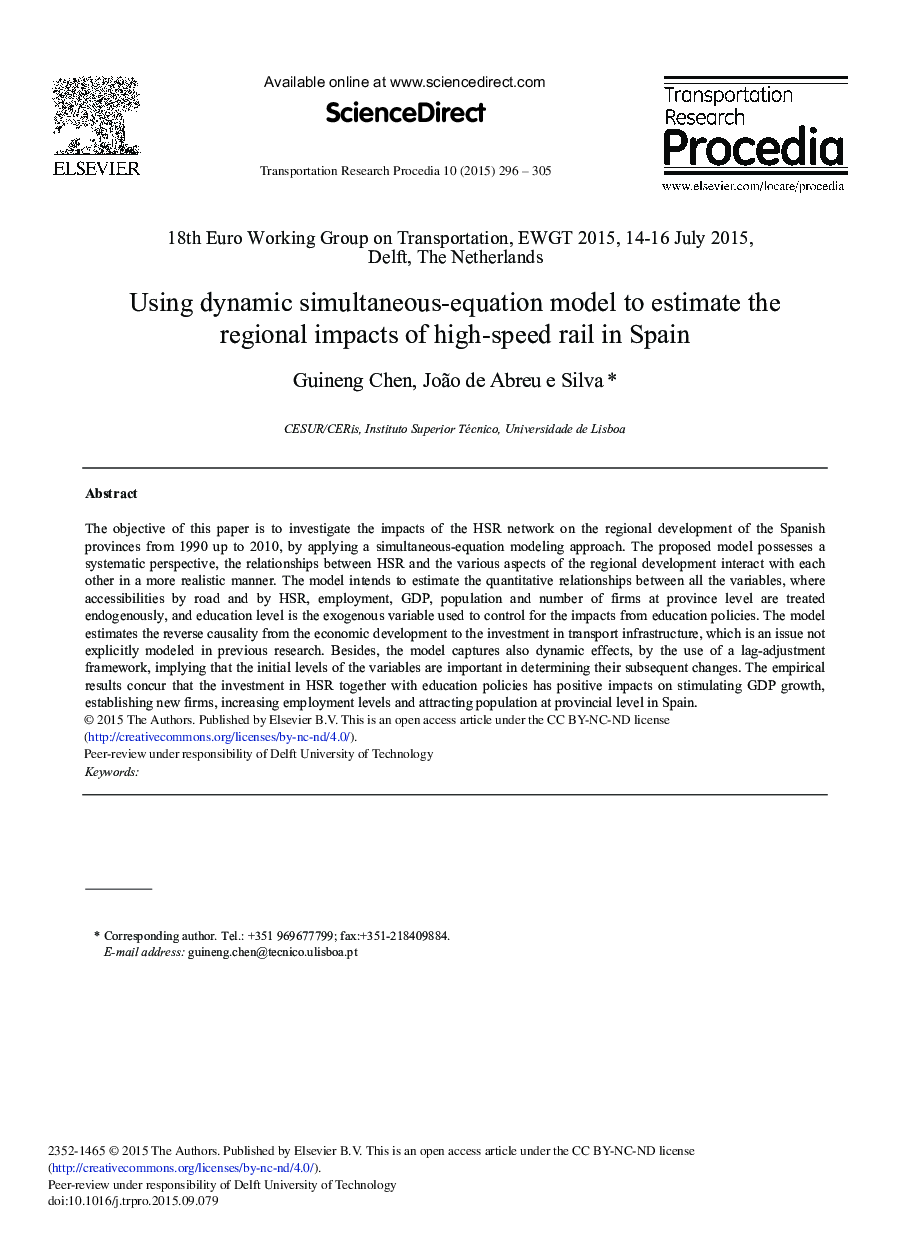| Article ID | Journal | Published Year | Pages | File Type |
|---|---|---|---|---|
| 1106839 | Transportation Research Procedia | 2015 | 10 Pages |
The objective of this paper is to investigate the impacts of the HSR network on the regional development of the Spanish provinces from 1990 up to 2010, by applying a simultaneous-equation modeling approach. The proposed model possesses a systematic perspective, the relationships between HSR and the various aspects of the regional development interact with each other in a more realistic manner. The model intends to estimate the quantitative relationships between all the variables, where accessibilities by road and by HSR, employment, GDP, population and number of firms at province level are treated endogenously, and education level is the exogenous variable used to control for the impacts from education policies. The model estimates the reverse causality from the economic development to the investment in transport infrastructure, which is an issue not explicitly modeled in previous research. Besides, the model captures also dynamic effects, by the use of a lag-adjustment framework, implying that the initial levels of the variables are important in determining their subsequent changes. The empirical results concur that the investment in HSR together with education policies has positive impacts on stimulating GDP growth, establishing new firms, increasing employment levels and attracting population at provincial level in Spain.
